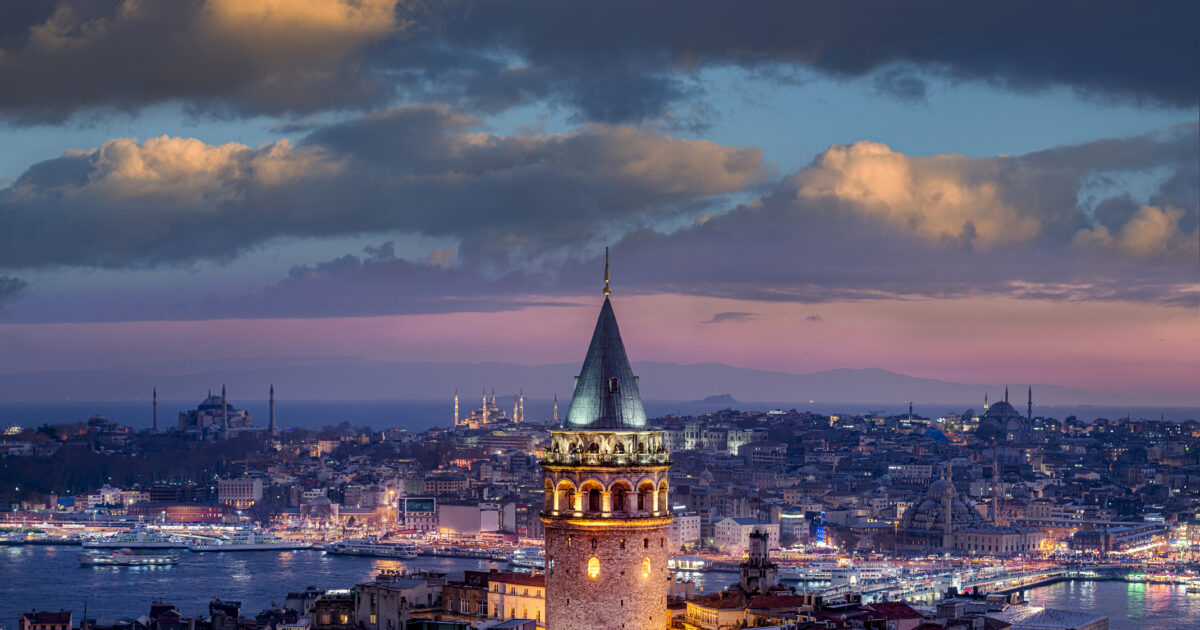Galata’s Tower is a medieval building in its Beyoglou area Constantinoplein Turkey, on the north side of the Gulf of Gulf that looks at the Bosphorus.
The construction of the Tower dates back to 1348, during the Byzantine Empire, by the Genoese as part of the fortifications of their district in the area.
Initially, the tower had a strategic purpose, acting as a observation tower to protect any attacks from the sea, but also to control navigation in the Gulf.
The tower is about 66.9 meters high and when built, it was the highest building in the city.
The Genoese called the “Christea Turris” tower, which means the Tower of Christ. The tower is made of stone and has a narrow shape, with a wider base and a smaller coin.
After the Ottoman conquest during the 16th century it was also used as a prison. In the 17th century they were used for astronomical studies.
Later and by the end of the 1960s it was exploited as a Fire Station.
Many legends and stories surround the tower. Tourist Evliya Celebi recounts that the legendary aviator, Hezarfen Ahmet Tselebi, managed to fly in the 17th century, with an improvised wing mechanism, succeeding in crossing the Bosphorus and landing successfully.
Today, the Galata Tower is a popular tourist attraction, offering stunning views of Constantinople and the city’s outskirts from its observatory.
Inside there are exhibits for the history of the tower, as well as information on the various stages of its restoration.
At the top of the tower there is a cafeteria and a restaurant, and cultural events are organized at regular intervals.
